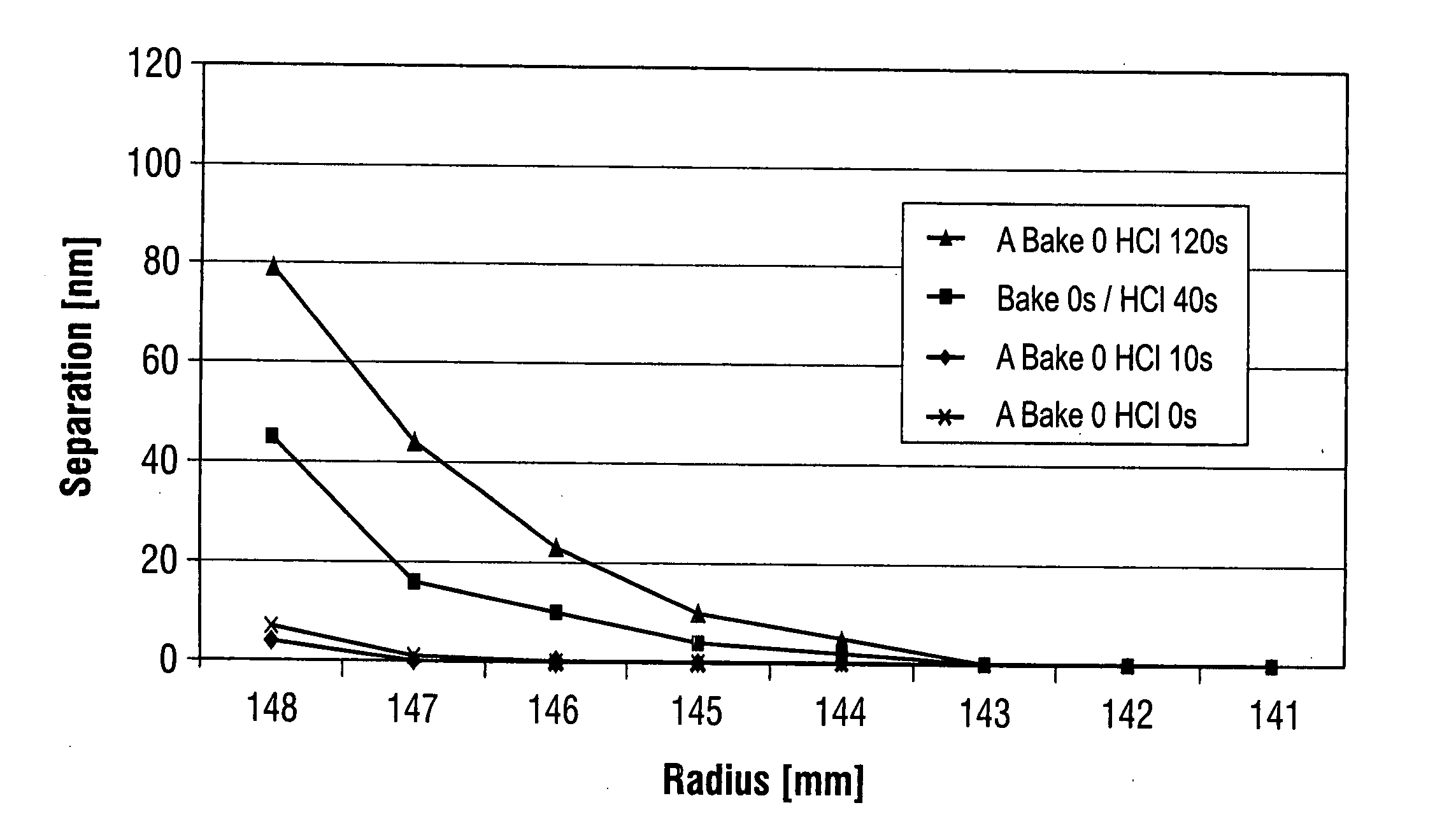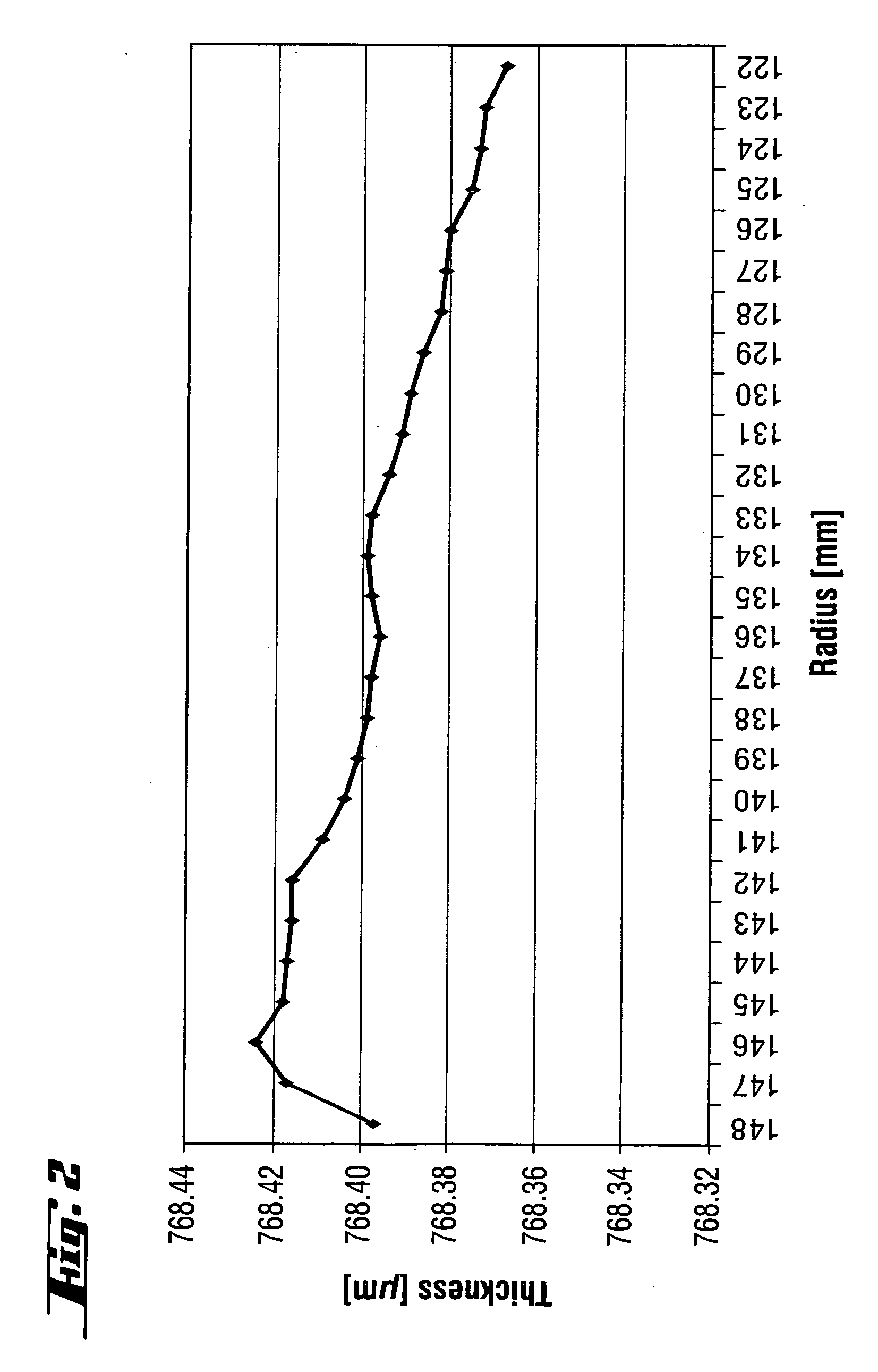Epitaxially coated silicon wafer and method for producing epitaxially coated silicon wafers
a technology of epitaxial coating and silicon wafers, which is applied in the direction of chemically reactive gases, crystal growth processes, polycrystalline material growth, etc., can solve the problems of 25% of epitaxially coated silicon wafers not meeting local flatness requirements, and the local flatness of epitaxially coated silicon wafers is significantly poorer. , to achieve the effect of high yield
- Summary
- Abstract
- Description
- Claims
- Application Information
AI Technical Summary
Benefits of technology
Problems solved by technology
Method used
Image
Examples
example
[0065] Determination of the initial geometry of a concavely polished silicon wafer prior to pretreatment / epitaxy resulted in the following R30 values: an R30-1 mm of −120 nm, an R30-2 mm of 50 nm and an R30-3 mm of −30 nm.
[0066] This concavely polished silicon wafer was epitaxially coated according to the invention, the following process parameters having been chosen: heating of the susceptor without a substrate to 1100° C.; H2 bake pretreatment with H2 flow rate of 60 slm and treatment duration of 20 s; HCl etching treatment with H2 flow rate of 50 slm and treatment duration of 60 s; epitaxial deposition by means of TCS at a deposition temperature of 1120° C., a TCS flow rate of 17 slm, and deposition duration of 63 sec. For the epitaxially coated silicon wafer, a significantly better value of −7 nm results for the R30-1 mm edge roll-off parameter. At a distance of 2 mm and 3 mm from the edge, the curve averaged over all the radial cross sections lies above the reference line. The...
PUM
 Login to View More
Login to View More Abstract
Description
Claims
Application Information
 Login to View More
Login to View More - R&D
- Intellectual Property
- Life Sciences
- Materials
- Tech Scout
- Unparalleled Data Quality
- Higher Quality Content
- 60% Fewer Hallucinations
Browse by: Latest US Patents, China's latest patents, Technical Efficacy Thesaurus, Application Domain, Technology Topic, Popular Technical Reports.
© 2025 PatSnap. All rights reserved.Legal|Privacy policy|Modern Slavery Act Transparency Statement|Sitemap|About US| Contact US: help@patsnap.com



